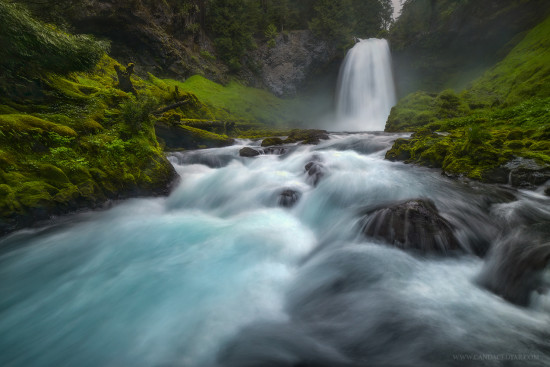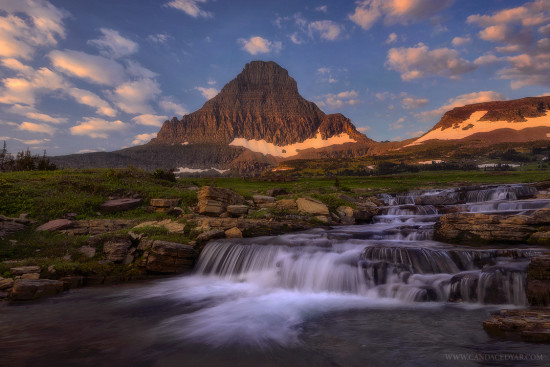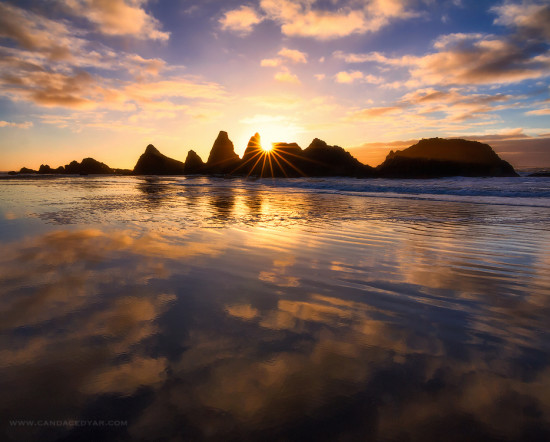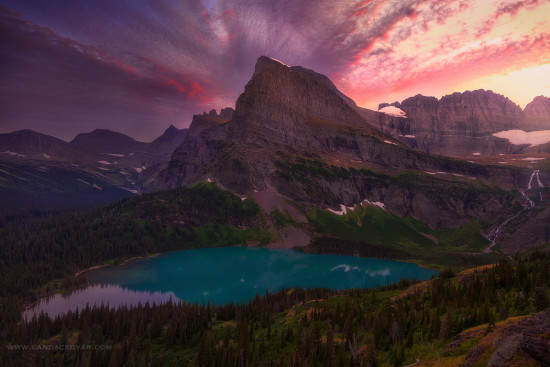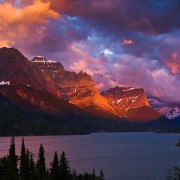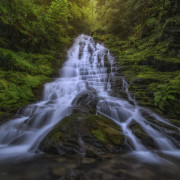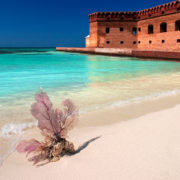5 Indispensable Beginner Landscape Photography Tips
Since beginning my landscape photography journey roughly six years ago, I have absorbed a great wealth of information along the way that has helped me to evolve and advance my abilities both in the field and in the realm of post processing. While some landscape photography tips can seem very basic and mundane, they may also prove to be extremely helpful in the long run. Here are the five indispensable tips for aspiring landscape photographers who are just getting their feet wet and want to eventually take their photography to the next level.
#1: Learn to use the Exposure Triangle
This is the common term used for the three fundamental elements of exposure: aperture, shutter speed, and ISO. Exposure is the most basic element of photography, and therefore the most important to learn about. When shooting landscapes, the standard and most common approach is to make sure that you have the entire scene in focus and the easiest way to ensure this is to use a smaller aperture setting (larger number) to allow for a greater depth of field. Usually when you are shooting with a smaller aperture, you’ll find that you need to compensate by using a slower shutter speed.
Landscape photographers frequently use slow shutter speeds and small apertures to create a smooth, pleasing effect with water movement while extending the depth of field. This is where a tripod is vital and a cable release is very useful, especially when attempting to capture exposures that are several seconds long. Lower ISOs preserve dynamic range and keep noise at a minimum. Shooting at your lowest native ISO setting will therefore capture the best dynamic range and show a greater range of detail from the shadows and highlights.
#2: Know your Photography Gear – How to use it, and What to bring along
Aside from knowing how to use the manual mode on your camera, it is important to be aware of what other gear you should learn about and take with you for any given situation. A rugged camera bag that is water-resistant, can carry all of your essential gear, and is comfortable on your body is a worthwhile long-term investment. Having a sturdy light weight tripod is a must for any landscape photographer and will help you to achieve overall sharper images. A cable release is also important for creating sharper images and is very handy when shooting longer exposures such as waterfalls. This ensures that the camera does not have the slightest movement by your finger or hand.
Additionally, having a circular polarizer in your backpack will frequently come in handy, depending on what type of landscape is being photographed and the desired effect. You’ll find it extremely helpful in situations where you want to cut out reflections and glare from a scene. Finally, bringing along extras is crucial and perhaps the most important part of being prepared. My motto is to always bring along at least one extra battery and memory card. The absolute last thing you want to have happen is witnessing that gorgeous sunrise or sunset only to find that your memory card is full or that you have 5% battery life left with nothing to back you up in your pack. Waders or an extra pair of high quality, comfortable hiking shoes and socks (if you can afford them) are also a worthwhile investment as you can never fully predict what conditions may cross your path on or off the trail. While there is certainly other gear that may be helpful to bring along, these are items that I recommend researching more about and taking with you.
#3: Research, Plan, and Check Weather
Knowing the best time of year or optimal time of day to travel or hike to a certain location has its obvious benefits. If you are making plans to visit a location, it’s a good idea to do some research online and look through maps and brochures that give details about that area beforehand. Asking around also doesn’t hurt. Talking to a park ranger if you are visiting a national park or simply searching for certain locations and conversing with others via image sharing sites can help you make the best overall decision. Be sure to check the weather forecast beforehand or look at online webcams for the area you plan to visit.
Pack an adequate amount of gear, but also be careful to not over-pack which would weigh you down, especially on longer hikes. If you plan on doing a strenuous hike and know that you will be photographing a location where you will primarily be using a wide-angle lens, then it’s a good idea to take along only that lens and maybe a mid-range zoom lens in case you want to get in a bit closer to the scene. Dressing in layers and being able to add or take off a layer at a time will give you adequate flexibility in regulating body temperature, especially if you will be in an area where the weather can vary greatly or drop significantly after sunset. Lastly, knowing where the placement of certain elements will be at any given time of the day will also play a big part in your photography as you advance. For example, if you are looking to photograph a seascape and want to make sure that you time it during a low tide for a more compelling photo. Or, if you already know which specific composition you plan on photographing, but want to ensure that the light is hitting at a certain spot at a specific time of the day in order to achieve a desired effect.
#4: Scout the Location
Something you will quickly learn as a beginner with landscape photography is that a good portion of photographers are looking to get a shot around the irresistible “magic hour” time, near sunrise or sunset when the light is typically most appealing and brings out more details. It is a good idea to check the times for sunrise and sunset and be sure the places you want to shoot are accessible at those times.
Make sure that you allow for at least an extra hour or two to walk around and find the best viewpoint before you plan on shooting anything at either sunrise or sunset, leaving an adequate amount of time to scout the location for a desired composition. This will allow you to compose the image beforehand and enjoy the beautiful location more, without fumbling around and trying to figure out where you should be last minute. In many cases, this may mean getting up a few hours before sunrise to hike up to a lake in the mountains or starting that eight mile hike midday so that you aren’t rushed for sunset. As landscape and nature photographers, this is something that comes with the territory and we often sacrifice a good amount of sleep at night in order to try and catch the most optimal light conditions. It is quite amazing how worthwhile it can end up being if you have the motivation and drive to do it. Plus, you can sneak in nap time later on. There is just something so fulfilling and rewarding about being out in the wilderness to witness a beautiful sunrise, knowing you were there to capture it and create something memorable to share with others.
#5: Be Adventurous & Be Patient
Patience is definitely a virtue in landscape photography. There is nothing quite like catching that epic dramatic light coming through the clouds as a storm clears. In some cases, getting drenched and waiting through the worst conditions can end up resulting in the best kind of reward, with a once in a lifetime kind of image from a location.
If the light doesn’t cooperate or the weather conditions end up being less than appealing, take the time to explore the area instead of abandoning your plans to photograph it. Be adventurous and challenge yourself to explore your personal creative side. Try new perspectives with the conditions you are given and, most importantly, enjoy your beautiful location. After all, that is what it should be all about.
I hope that these five tips for beginner landscape and nature photographers are somewhat helpful and informative.
Additional Landscape Photography Resources
The field of landscape photography can be difficult to master because it involves both creativity and technical skills. Some may easily grasp the technical side of landscape photography, while others pick up post-processing more quickly. Some are extremely creative, but have a difficult time with a more technical thought-process. This page provides you with tools for beginner landscape photographers to get started.


